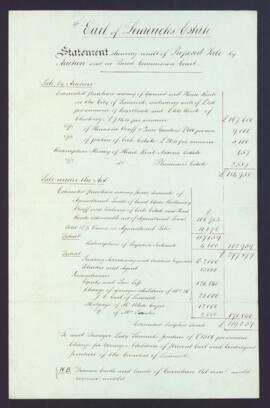Black and white negative of Mr Gibney, the Station Manager for Aer Lingus sitting at his desk. Envelope notes the initials S.C.
Shannon DevelopmentBlack and white negative of Mr Gibney, the Station Manager for Aer Lingus sitting at his desk. Envelope notes the initials S.C.
Shannon DevelopmentStatements by seven anonymous witnesses relating to an armed incident at Caherguillamore House near Bruff, county Limerick on 27 December 1920.
Daly Family of Limerick CityStatements of title and related observations concerning Samuel Moore's title to the Moynehall estate and the financial status of the estate.
Moore family of Moynehall, county CavanStatement showing result of proposed sale by auction of the 4th Earl of Limerick’s estates in the Land Commission Court. With a related draft.
Pery family, Earls of LimerickAnnual statements of PAYE and pay-related social insurance contributions made by Michael Allott in 1978-1979.
Allott family of Odellville, County LimerickAnnual statements of PAYE and pay-related social insurance contributions made by Michael Allott in 1982-1983.
Allott family of Odellville, County LimerickAnnual statements of PAYE and pay-related social insurance contributions made by Michael Allott in 1984-1985.
Allott family of Odellville, County LimerickAnnual statements of PAYE and pay-related social insurance contributions made by Michael Allott in 1985-1986.
Allott family of Odellville, County LimerickAnnual statements of PAYE and pay-related social insurance contributions made by Michael Allott in 1986-1987.
Allott family of Odellville, County Limerick

